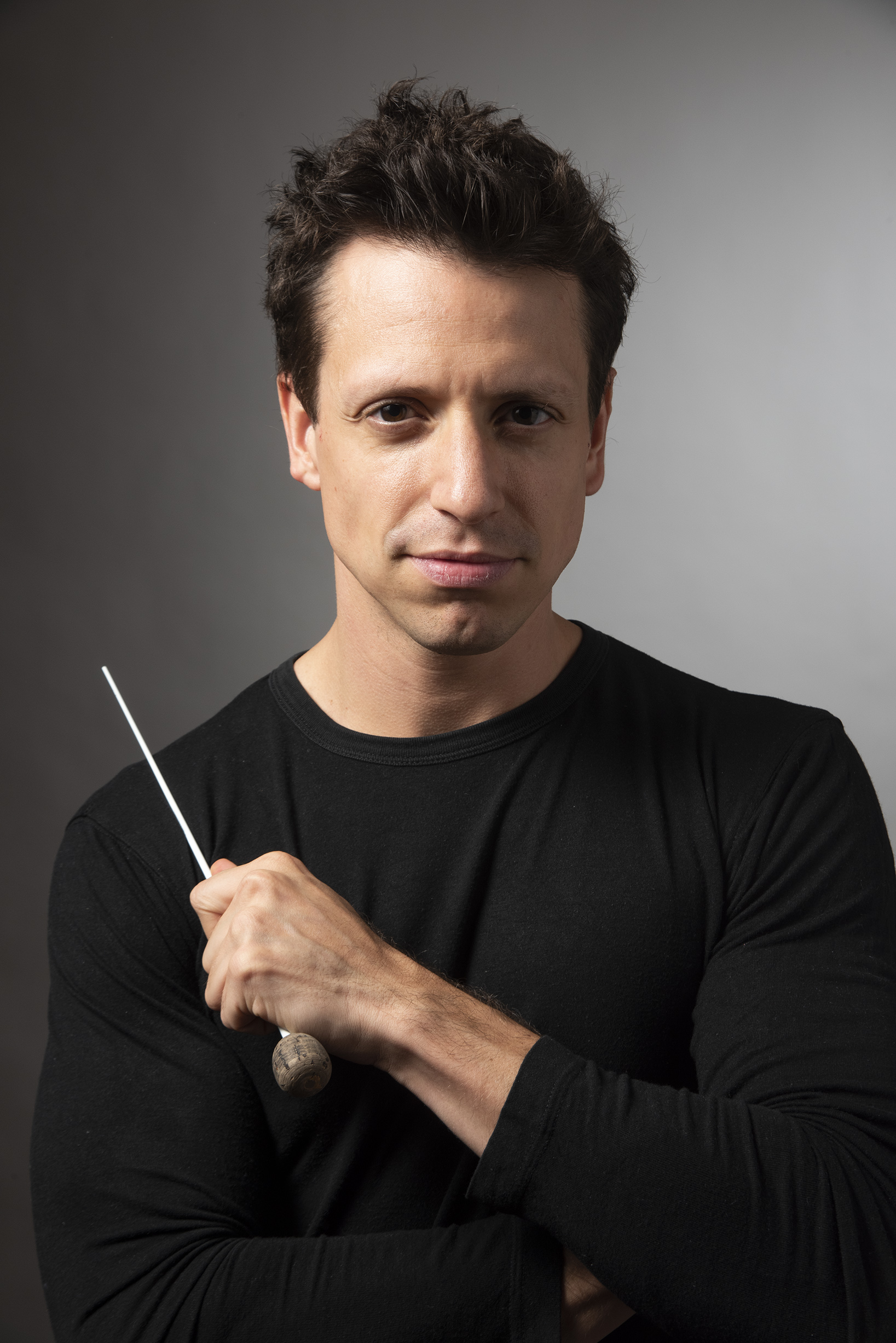Conductor Paolo Bortolameolli Leads Gripping Tchaikovsky ‘Pathétique’ Symphony with the San Diego Symphony
Paolo Bortolameolli, Associate Conductor of the Los Angeles Philharmonic, led the San Diego Symphony Friday in a vibrant account of Tchaikovsky’s Symphony No. 6 in B Minor, Pathétique. He opened this program presented at Escondido’s California Center for the Arts with Estallido, a short tone poem written by Nigel Farías for Bortolameolli in 2019. And guest pianist Janice Carissa rounded out the program with Maurice Ravel’s Piano Concerto for the Left Hand in D Major.
Bortolameolli led the orchestra in an impassioned yet thoroughly disciplined Pathétique Symphony, flooding the hall with the luxurious sonic tapestry this arch-Romantic piece deserves. From the mysterious, deep, portentious themes that open the “Adagio,” the young Chilean-Italian conductor maintained a sense of urgency through the brass fanfares that cadence in that almost too-familiar ardent main theme that the composer immediately overshadows with an unexpectedly turbulent development section, the full orchestra heralding ferocious blasts of brass and percussion.The “Allegro con grazia” waltzed gracefully per the composer’s instructions, with the strings providing ample lyrical lightness to this ingratiating movement, while the vibrant scherzo “Allegro molto vivace” provided fleet, effervescent contrast.
Although Tchaikovsky marked his closing Finale “lamentoso,” Bortolameolli and the orchestra created an emotional crescendo through this movement that suggested a solid reserve of confidence below such temporal disappointment.
In his introduction from the stage to his composition Estallido, Chilean composer Miguel Farías explained that the title, which means explosion, refers both to its musical motifs and to the political upheaval that was happening in Chile in 2019 when he wrote the work. Estadillo, which Bortolameolli and the Los Angeles Philharmonic premiered in 2022, opens with an eerie tableau of sustained yet expectant motifs that suggest a score for a science fiction film. But driven by an insistent percussion beat, the work unfolds with assertive themes emerging from contrasting sections of the orchestra. Farías gives the brass sections their commanding resolution .
The insistent edge of Estadillo set the stage for Carissa’s bracing performance in Ravel’s Piano Concerto for the Left Hand in D Major. Although this concerto is not as frequently programmed as Ravel’s Piano Concerto in G Major, it is a bolder work than the ingratiating G Major concerto. While the G Major Concerto represents the composer’s most polished neoclassical style, the Left Hand Concerto reveals traits of Expressionist angst brilliantly contrasted with vital jazz-inspired themes, a result of Ravel’s experience of jazz on his American concert tour the previous year. The Left Hand Concerto’s commissioner, pianist Paul Wittgenstein, did not approve of the concerto’s jazz-inflected elements when he first performed the work, but he did grow to accept Ravel’s vision.
Carissa, Indonesian by birth but educated at the Curtis Institute of Music and Juilliard, amply displayed the formidable technique the concerto requires: powerful attacks followed by figurations of shimmering clarity. Bortolameolli shaped this unusual concerto—a single movement that inverts the usual fast-slow-fast order of the typical three movement concerto—skillfully balancing its majestic dramatic surges with its amazing flights lyrical elation.
This concert was presented by the San Diego Symphony at Escondido’s California Center for the Arts on Friday, March 22.

Ken Herman, a classically trained pianist and organist, has covered music for the San Diego Union, the Los Angeles Times’ San Diego Edition, and for sandiego.com. He has won numerous awards, including first place for Live Performance and Opera Reviews in the 2017, the 2018, and the 2019 Excellence in Journalism Awards competition held by the San Diego Press Club. A Chicago native, he came to San Diego to pursue a graduate degree and stayed.Read more…


Thank you, Ken, for helping us relive a wonderful evening of inspired music. It was a pleasure speaking with you at intermission. Looking forward to hearing you play, as well, one Sunday morning soon.